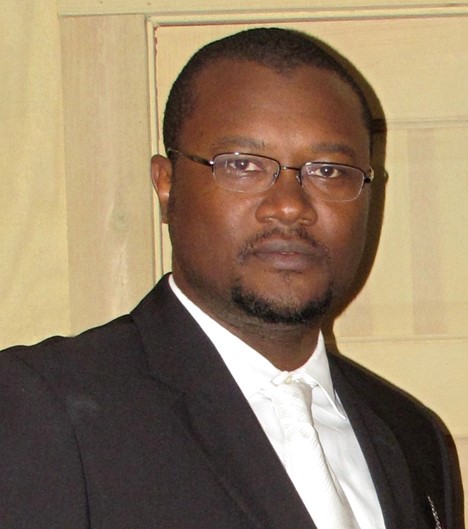Moussa N’Gom, Rensselaer Polytechnic Institute – Optics: The Future of Computation and Medicine
 Light can be a useful and non-invasive tool in medicine.
Light can be a useful and non-invasive tool in medicine.
Moussa N’Gom, assistant professor in the department of physics, applied physics, and astronomy at Rensselaer Polytechnic Institute, explains how.
Moussa N’Gom is an assistant professor in the Department of Physics, Applied Physics, and Astronomy at Rensselaer Polytechnic Institute.
Following an early career in industry as a senior research scientist in ultrafast lasers, optical communications, and materials processing, N’Gom joined the Center for Ultrafast Optical Sciences at the University of Michigan. There, he explored light transmission through highly scattering media through light manipulation or wavefront shaping.
The newly emerging field of optical wavefront shaping involves the ability to manipulate light fields both spatially and temporally. It has largely been enabled by the availability of spatial light modulators, or SLMs. SLMs are used to create arbitrarily complex light fields that are now powerful elements of the optics toolbox. An SLM also provides the means to manipulate the fundamental constituents of classical light or single photons, which obey the laws of quantum physics.
At Rensselaer, N’Gom uses these tools to explore novel ways to address topics where conventional optical techniques are hard to apply, such as the control of light propagation in biological tissues, complex photonic structures, plasmonic systems, and multimode fibers.
N’Gom’s research exploits the versatility of wavefront shaping tools to address challenges in biomedical imaging and to generate entangled structured light fields to address coherence degradation in optical communication transmission channels.
Optics: The Future of Computation and Medicine
When we learn something new, we call it “enlightening.” In big, Eureka! Moments we say that “We have seen the light.” Well, these expressions are spot-on because light is a very powerful thing.
My research involves manipulating light to interact with matter and creating all sorts of structured light. It can be applied to a variety of fields including biomedicine, condensed matter physics, materials science, plasma physics, telecommunication, and computing.
I am interested in developing non-invasive diagnostic tools. My lab came up with a novel technique that allows us to discriminate among different light signals as we probe below the skin. It allows for the exact identification, classification, characterization, and diagnosis of cells according to their molecular response to light excitation. We can even use light to measure blood sugar content in diabetic patients.
In quantum computing, I am working on developing single photon sources based on quantum light. A single photon source is simply a stream or beam of the same exact photon separated in time. An exciting recent advance was that my team used laser filament, or light bullets, to pierce through the cloud or create a clear channel through dense cloud to send optical information. This includes quantum information.
Optics is the future. Optics, light, and quantum light will have a significant impact on the future.


